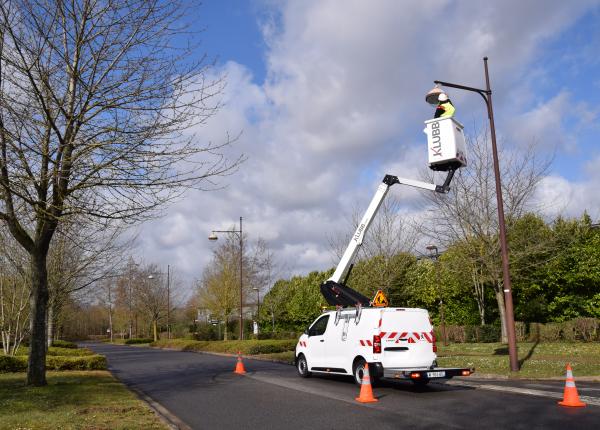
Articulated booms, telescopic booms, what are the technical differences?
Aerial lifts with articulated booms offer a greater degree of freedom than telescopic booms. Therefore, they are more suitable for accessing difficult-to-reach high work areas. However, articulated booms, which offer more flexible movements, require the addition of additional cylinders.
A vehicle-mounted articulated boom lift always has stabilizers to securely anchor it to the ground during operation. Articulated boom lifts on vehicles will also always be equipped with a basket that can accommodate 2 people.
The weight constraint of articulated booms makes their integration on a variety of vehicles complex. Articulated boom lift models are only installed on flatbed chassis.
The main technical difference between an articulated boom and a telescopic boom lies in the horizontal outreach. At the same height, a telescopic boom will have a greater horizontal outreach than an articulated boom. This detail matters when it comes to maintaining public lighting, for example.
By using a platform with a telescopic boom, you will be less constrained to change the position of your vehicle.
A telescopic boom, being lighter than an articulated boom, can be installed on a greater variety of vehicles such as vans (light commercial vehicles).
Articulated booms, telescopic booms, what are the commercial differences?
Articulated booms are more practical and efficient, and are recommended for jobs in construction, tree pruning, and industry, as they offer more flexibility. The boom unfolds accordion-style and allows access to areas by going over obstacles instead of under them. It also allows for easier movement horizontally and vertically while working at the same point.
On the other hand, telescopic booms are faster for electricians, for example. They have quicker deployment as they unfold more rapidly, allowing for work in a plumb line manner: when the workspace is clear, the electrician changes bulbs one by one and works in a chain-like manner.




